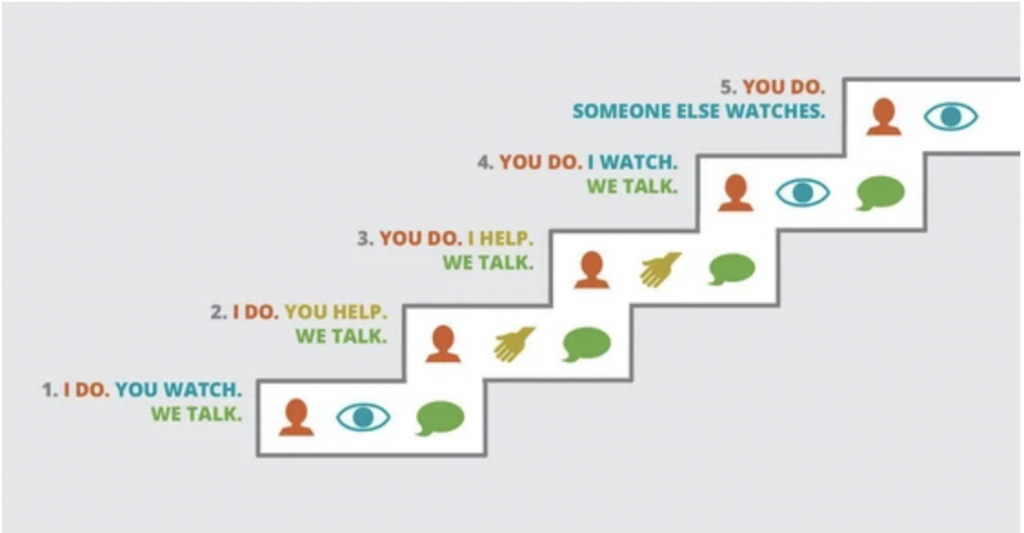Why Coaching?
Guiding someone on their discipleship journey or developing another individual as a leader are opportunities to use basic coaching tools like asking questions, listening, and focusing. Coaching can help people advance and accelerate their development.
What does Scripture say about coaching?
Ephesians 4:11-12 has a lot to say about coaching! Coaching is a subset of equipping people that bleeds throughout the empowerment process. Think about the processes through which you take a new leader of a small group. If you broke down your equipping process, would it look something like the following?
- Orientation – discuss the why, what, and how to understand the essentials of leading a small group
- Apprenticeship – experience a small group while working alongside a small group leader
- Just-in-Time Training – an apprentice learns the necessary skills by building confidence through on-the-job training
- Empowerment – less direct supervision becomes less and less important
For maximum impact throughout the equipping process above, a supportive relationship with a coach is absolutely necessary. The trainer might also serve as the coach – however, one without the other is not going to empower the new small group leader. And the more the trainer can lean into a coach approach in their role of trainer, the greater the impact!
Five coaching steps for developing a leader

1. I do. You watch. We talk.
In this leadership development process, I act as the coach and “Jason” acts as the apprentice. The first time we meet, I tell Jason to simply come to small group with me. I will lead the group, and all Jason has to do that first week is just watch me–see how I interact, what I say, what I do, how I lead the material. Then Jason and I are going to talk after that group is done. Maybe it’s a Wednesday night after the kids are in bed, and we go up to the local coffee shop for an hour.
2. I do. You help. We talk.
In the second step, I’m going to do, Jason is going to help, and we’re still going to talk. In that next small group (or maybe just a couple weeks later), Jason is going to lead the prayer time and gather the prayer requests. I’m going to make sure that Jason and I meet that week and talk about it. This is Jason’s opportunity to process what he’s learning about leading the group, leading the material, and so on. Leaders are available to and for each other, so for whatever is on his heart or what he’s challenged with, I’m available to him.
Coaching is a subset of equipping that bleeds throughout the empowerment process
3. You do. I help. We talk.
In the third step, Jason does, I help him, and we talk. You see how it’s just starting to switch on us? As time goes on, he’s taking more and more of the responsibility for the group.
4. You do. I watch. We talk.
In the fourth step, Jason does everything, and I simply watch. And don’t worry – I’ve got his back because I want Jason to succeed. Leaders invest in other people. We want other leaders to win. And we still talk afterward. Never forget that part. It’s really important because leaders are often made over a coffee table.
5. You do. Someone else watches.
Then in the last step, Jason does. But now, he’s the mentor and he has his own apprentice, and the cycle continues on from there.
So what’s the time frame for each of these five steps? It could be as little as a week or as much as a month or more. It’s all about how fast the leader develops, and that process will be unique to each person.
The Five Steps of Leadership Development is a simple but effective tool that doesn’t overcomplicate leadership development
NOTE: I borrowed The 5 Steps of Leadership Development from Patrick O’Connell who is the Director of NewThing. He presented the 5 steps in a very clear and helpful manner. Thank you Patrick..
Photo by Siora Photography on Unsplash

